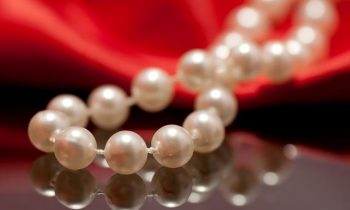The most widespread of engagement traditions is the groom presenting his bride to be with a ring. Most frequently, the engagement ring is a diamond ring. Even though diamonds are the most desired by brides to be, diamonds are not the only precious stones used in engagement rings.
If your choice of engagement ring is a diamond ring, be prepared to spend. The diamond jewelry retail market is a $30 billion market. Over $5 billion is spent on engagement ring in the U.S. market.
To the untrained eye, most diamonds look very similar. Most people differentiate between diamonds based on size, shape, and price. A lower price usually means lower diamond quality, not necessarily a bargain.
Judging diamond quality requires skill and experience, and it involves grading a ring based on a combination of characteristics such as cut, clarity, color and carat weight. The above characteristics are called the “4 Cs”. A diamond’s weight is measured in carats, equivalent to one fifth of a gram. Usually diamonds range from 0.25 up to several carats. Weight is only one way of valuing a diamond, color is another. Colorless diamonds are the most rare and they are the most valuable. Colored diamonds with a hint of yellow are more common and less expensive.
Diamond colors are coded from D to Z. A D grade is the most valuable and Z is least valuable. Diamonds graded D-F are considered colorless and they are the most valuable. Many reputable jewelry stores do not sell K thru Z grade diamonds.
The most valuable color grades:
D: Absolutely colorless. The highest color grade, which is extremely rare.
E: Colorless. Only minute traces of color can be detected by an expert gemologist. A rare diamond.
F: Colorless. Slight color detected by an expert gemologist, but still considered a “colorless” grade. A high-quality diamond.
Another essential factor determining the price of a diamond is its cut. Just like color, cut, is equally difficult to judge for the untrained eye. The grading certificate that typically comes with the diamond will give you a good idea. Independent testing laboratories, such the GIA, provide certificates with a diamond’s grading from excellent to poor. A certified diamond also means a bigger price tag.
The clarity of a diamond simply refers to its purity. Most diamonds have minuscule markings called “inclusions”. A flawless (no inclusions) diamond is very rare and valuable, while a diamond riddled with inclusions is less expensive. Clarity is ranked from “flawless” (FL) to “imperfect” (I1 to I2).
Most diamonds fall between those with very, very small inclusions (VVS1) to rocks with slightly larger inclusions (S1). If you are willing to compromise on clarity, you can expect to save. To verify a diamond’s clarity, examine the laboratory certificate.
If you’re on a tight budget, try to stay away from the big name jewelry stores. Brand name usually comes with a larger price tag.
Buying wholesale may be an option. Normally the wholesaler’s core business is selling diamonds to retailers, but they also sell to the public. Because they do not advertise in the traditional methods, nor are they located in shopping malls, you have to seek them out. You will find some wholesalers listed as diamond merchants in the Yellow Pages.


 All about Pearl Necklaces
All about Pearl Necklaces Choosing Jewelry
Choosing Jewelry What is Amber jewelry
What is Amber jewelry Enough Jewelry Insurance?
Enough Jewelry Insurance? Jewelry Maintenance
Jewelry Maintenance